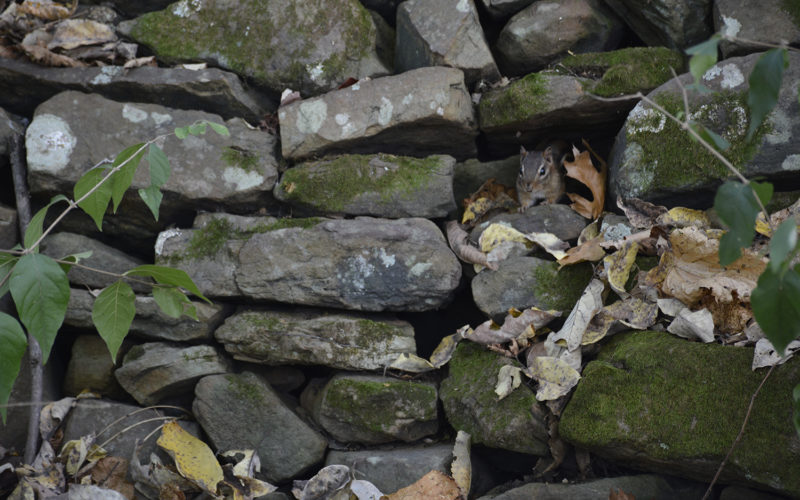Chipmunks can be converted to better neighbors
AMANDA BANCROFT
Making Ripples
A reader recently inquired about how to prevent chipmunks from digging around expensive landscaping plants. Another person reported that their building’s owner had poisoned the chipmunks living there, trying to stop damage inflicted on the shrubbery. This creates a vacuum that new chipmunks will certainly fill within time, not to mention it’s inhumane. But then, how can we humanely control chipmunk populations and keep our beautiful yards?
Of course, it’s a matter of perspective. Some people think the chipmunks, deer or monarch caterpillars are part of the yard’s beauty despite certain plants getting munched or bulldozed by tiny paws. Some presumably find your plants more attractive than the wildlife attracted to the plants. And replacing plants can be expensive if you’re not a native gardener growing from last year’s saved seeds. Luckily there are some paths to chipmunk and human coexistence.
If chipmunks and squirrels are getting into the bird seed, try cayenne pepper. Mix it into the seeds, and it might make things too hot for non-avian visitors. Birds can’t detect the hot spice; only mammals have that ability. In the same way, sprinkle cayenne powder around shrubs and plants that have been targeted by chipmunks. This might be enough to discourage digging in those areas. Scents like peppermint oil, citrus or cinnamon can deter chipmunks as well as many other garden “pests.”
Moth balls can present an odorous obstacle, but they contain toxins and should be avoided or used with caution. You may also unknowingly trap chipmunks inside your yard rather than repelling them, such as when a flower bed borders the entire house or property and moth balls are applied to the whole thing, making a central circle or area inside.
There are also ultrasonic solar-powered repellent devices that frighten wildlife away. This newer technology can detect movement and send out an ultrasonic sound when chipmunks approach. Results have varied in different scenarios with different species, and this could frighten away pets, too. Worth a try.
Habitat is a huge draw for chipmunks seeking food, water, cover and space to raise young. But if you remove all brush piles, shrubs and natural food sources, your yard may become less abundant in wildlife of all kinds. This could affect migrating species like hummingbirds. A safer goal is to prevent the creation of chipmunk habitat directly next to a flower bed. Don’t leave pet food outdoors, or let bird seed fall on the ground where bulbs are planted. Maybe there is a rock or wood pile serving as chipmunk apartments near your prized plants; moving the apartments may help. If all else fails, simply send your chipmunks to me! Just joking. Sorta.
Amanda Bancroft is a writer, artist, and naturalist living in an off-grid tiny house on Kessler Mountain. She and her husband Ryan blog about their adventures and offer tips to those wanting to make a difference at www.MakeRipples.org.










